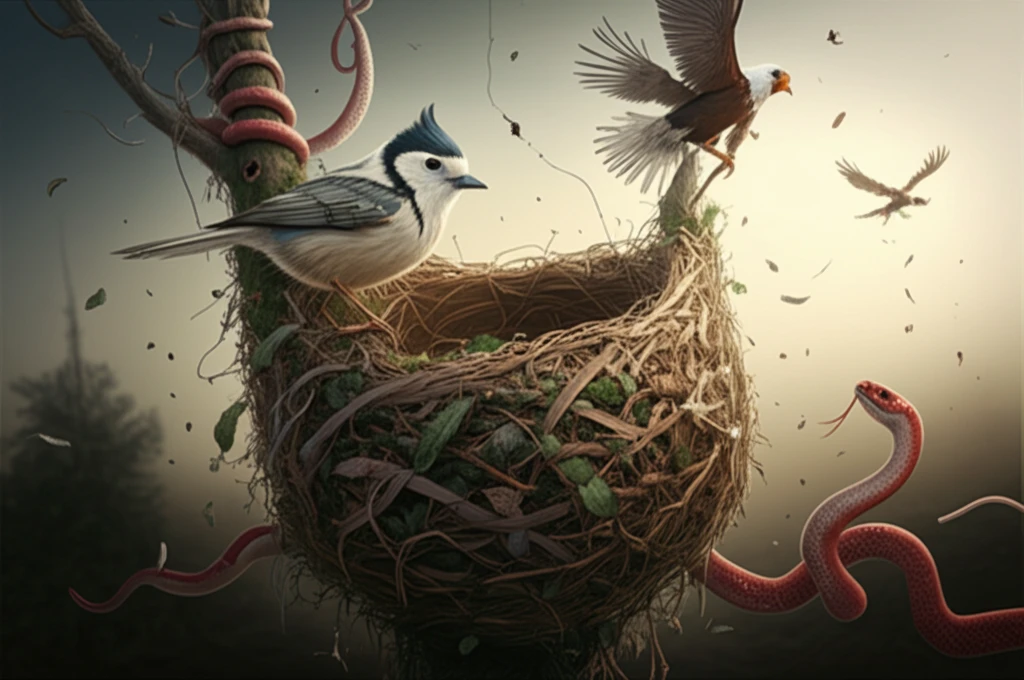
Nest Heights and Bird Survival: Decoding the Mystery of the Silver-Throated Tit
"Why are these birds building higher nests when it seems to put them at greater risk? New research sheds light on the complex factors affecting nesting success."
For bird species, successful reproduction hinges significantly on the ability to nest safely and securely. Nest predation, influenced by factors like climate, human disturbances, and the birds' own experiences, remains a primary cause of nest failure. However, various bird species employ strategies to mitigate these risks, including nest defense behaviors and synchronized nestling provisioning. Another key aspect is nest-site selection, which often determines the overall safety and success of a nest.
The 'predation avoidance hypothesis' suggests birds should favor nest sites that enhance nesting success. For many non-ground nesting birds, nest height plays a crucial role. Silver-throated Tits (Aegithalos glaucogularis), known for nesting at varying heights, experience high predation rates, making them ideal for studying the relationship between nest height and failure. Researchers have been studying this unique nesting habit.
A new study dives into the nesting habits of the Silver-throated Tit. The research investigates if the seasonal changes in nest height are adaptive, considering the seasonal variation of predation rates. By monitoring nests over several breeding seasons, scientists aimed to uncover whether nest height truly aids in survival, or if other factors are at play.
Unraveling the Nesting Habits of Silver-Throated Tits

Researchers monitored Silver-throated Tit nests across seven breeding seasons (2011-2017) in China's Dongzhai National Nature Reserve. The reserve, located in a transitional zone between subtropical and temperate climates, is known for its rich bird diversity. Data collection involved regularly checking nests to determine their breeding stages and eventual fate, whether successful or failed. Causes of failure, such as predation, abandonment, human interference, and adverse weather, were carefully recorded.
- Low nesting success overall (24.1%)
- Higher nests were more likely to be predated
- Nest height increased as the breeding season progressed
- Daily nest survival rates decreased later in the season
Looking Ahead: Unanswered Questions
While the study sheds light on the nesting habits of Silver-throated Tits, it also raises important questions. Future research should focus on understanding the specific factors driving the seemingly maladaptive increase in nest height. Detailed examinations of vegetation changes, microclimate conditions, and the roles of various predators, including snakes, are needed to fully understand the complexities of nest-site selection in birds. By continuing to investigate these patterns, scientists can gain valuable insights into the survival strategies of these creatures.
